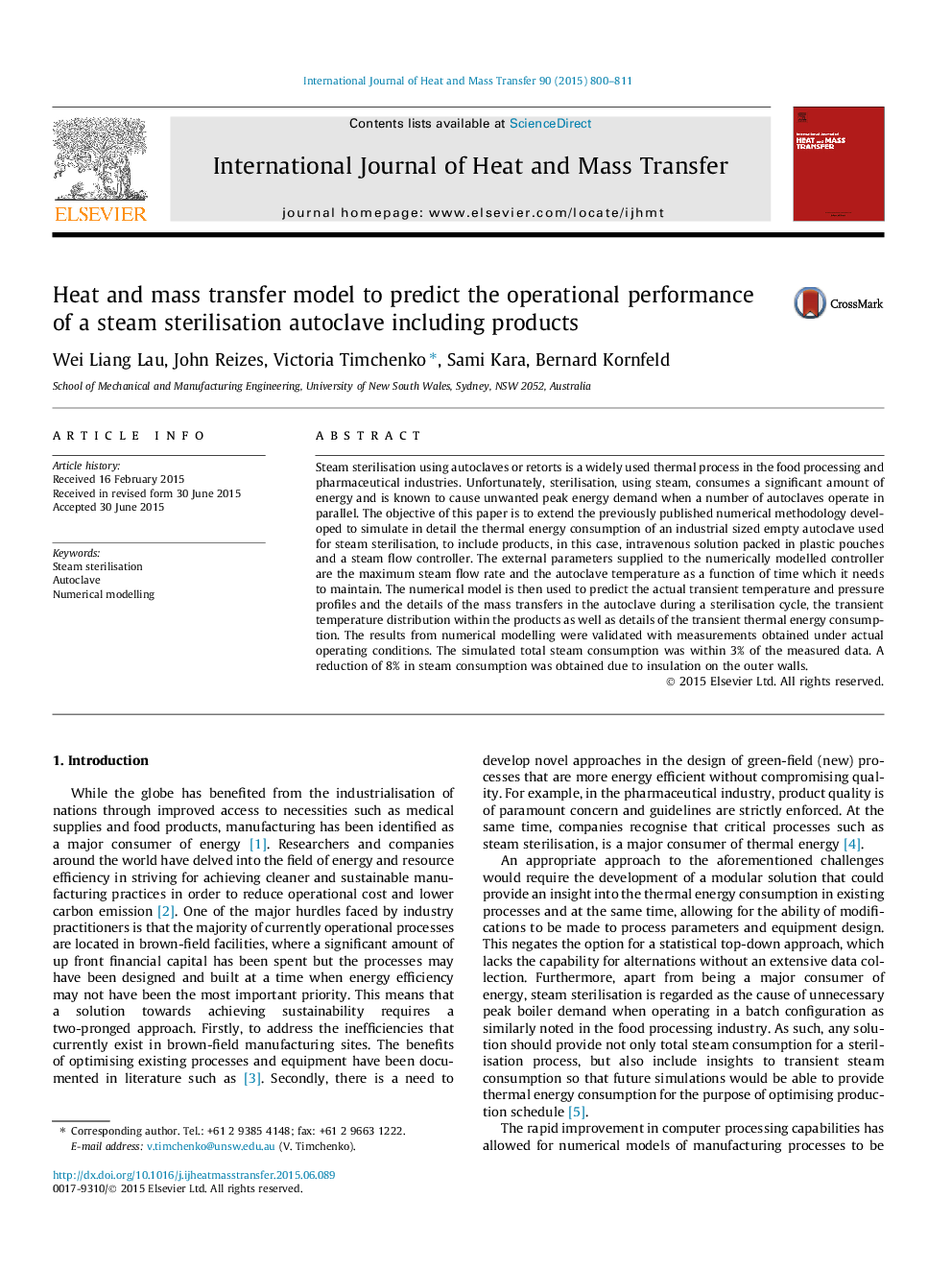| Article ID | Journal | Published Year | Pages | File Type |
|---|---|---|---|---|
| 7056541 | International Journal of Heat and Mass Transfer | 2015 | 12 Pages |
Abstract
Steam sterilisation using autoclaves or retorts is a widely used thermal process in the food processing and pharmaceutical industries. Unfortunately, sterilisation, using steam, consumes a significant amount of energy and is known to cause unwanted peak energy demand when a number of autoclaves operate in parallel. The objective of this paper is to extend the previously published numerical methodology developed to simulate in detail the thermal energy consumption of an industrial sized empty autoclave used for steam sterilisation, to include products, in this case, intravenous solution packed in plastic pouches and a steam flow controller. The external parameters supplied to the numerically modelled controller are the maximum steam flow rate and the autoclave temperature as a function of time which it needs to maintain. The numerical model is then used to predict the actual transient temperature and pressure profiles and the details of the mass transfers in the autoclave during a sterilisation cycle, the transient temperature distribution within the products as well as details of the transient thermal energy consumption. The results from numerical modelling were validated with measurements obtained under actual operating conditions. The simulated total steam consumption was within 3% of the measured data. A reduction of 8% in steam consumption was obtained due to insulation on the outer walls.
Keywords
Related Topics
Physical Sciences and Engineering
Chemical Engineering
Fluid Flow and Transfer Processes
Authors
Wei Liang Lau, John Reizes, Victoria Timchenko, Sami Kara, Bernard Kornfeld,
